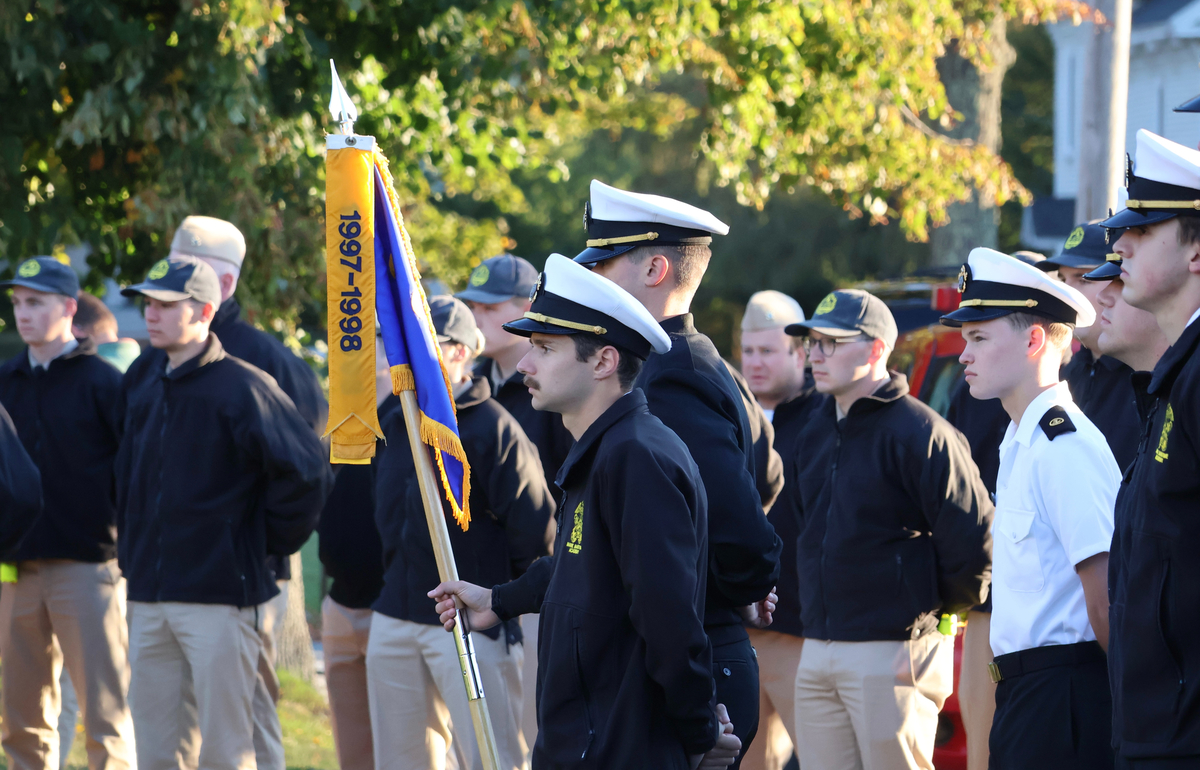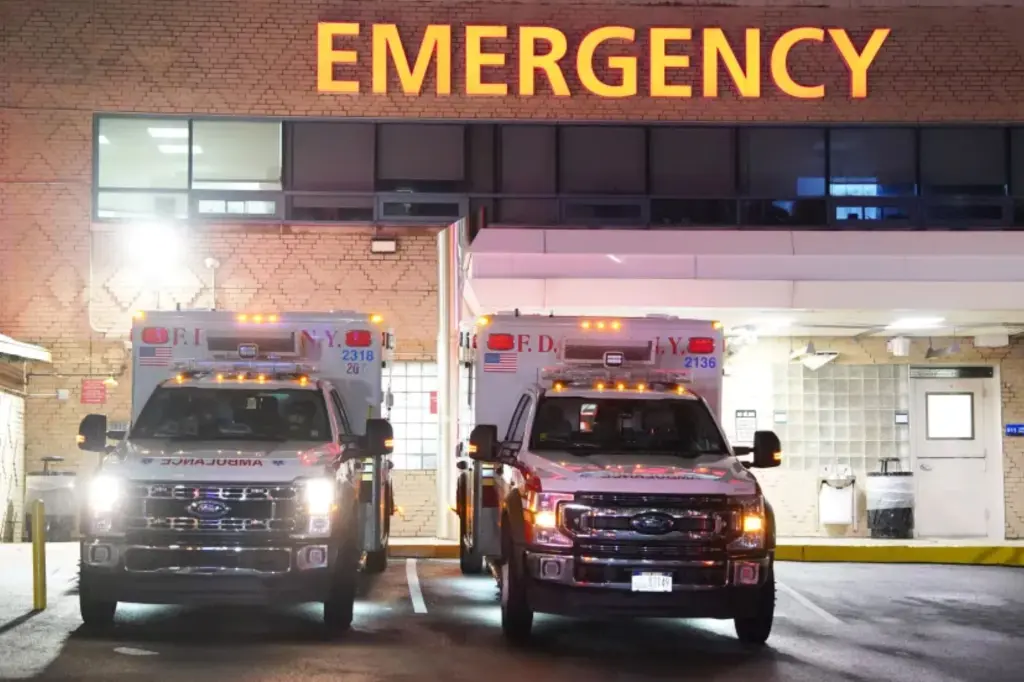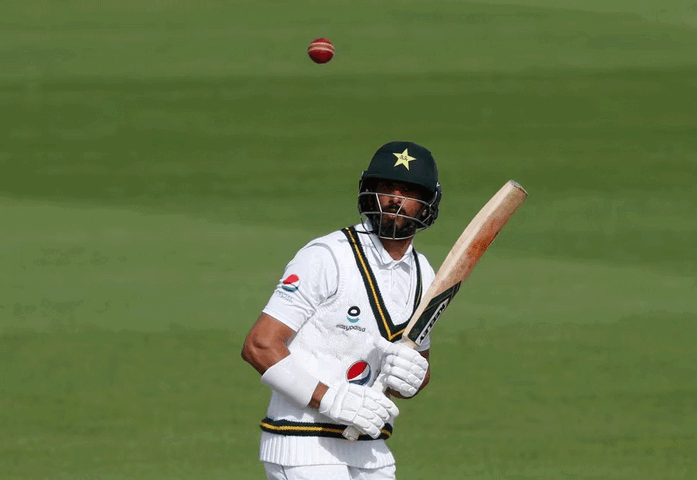
Deb Roberts didn’t worry when her son, Michael Holland, left home in Wilton a decade ago for another 75-day job at sea.
Holland had attended Maine Maritime Academy in Castine because he was adventurous, athletic, liked to get his hands dirty and could hunt and fish near campus. Quiet but charming, he had a way of entering a room full of strangers to leave it as everyone’s friend, his mother said.
She felt he had made the right choice of school and career.
But 10 years ago Wednesday, she got a call at work. The company he worked for had lost contact with his ship, the El Faro, which had left Jacksonville, Florida, two days before, headed for Puerto Rico.
A week later, the night before the search was called off, “A switch went off and I said, ‘Okay, he’s not coming home,’” she said. “It’s my job to make sure he’s never forgotten.”
Her 25-year-old son was one of four Mainers and five Maine Maritime Academy graduates aboard the ship, along with its captain, Michael Davidson; Danielle Randolph, 34, the second mate; Dylan Meklin, 23; and Mitchell Kuflik, 26.
The school held a ceremony Wednesday morning honoring them and the rest of the El Faro crew with speakers, song and a prayer on the lawn.
On Oct. 31, a month after disappearing, the ship was found on the ocean floor. It had headed directly into a hurricane, lost propulsion and started to list to the side, according to the last communications from crew members. All 33 people aboard died.
It was the worst U.S. maritime shipping disaster in more than 30 years, and an investigation into what went wrong eventually led to changes in maritime regulations and how mariners are trained here in Maine. But for those connected to it locally, the pain is still felt a decade later.
“When you have something like this, with some recent graduates especially, it really hits home, and it shaped a lot of how the community and the academy interacted at the time,” said Capt. Gordon MacArthur, who runs the school’s training ship and has lived in Castine since graduating in 2000. “…It really kind of brought us together, and that’s continued, largely, over the last 10 years.”
In the small town, students become part of the community, he said. Randolph was on the fire department; Meklin was a volunteer basketball coach at the elementary school.
“In 2015, I think we really had this false idea that a U.S. ship was never going to be lost again,” MacArthur said. “I mean, we hadn’t had a U.S. ship go missing since the early ’80s…and I think we were all under the false sense of security that we had solved the problem. So, it definitely was a pretty stark reminder that Mother Nature will win.”
The Castine school’s curriculum has gradually been adjusted and is still changing in response, particularly after new recommendations were issued by the safety board following an investigation, according to MacArthur. Some of those also became federal law in 2018.
For more than two years, the sinking was investigated by the National Transportation Safety Board, a government agency which probes transportation accidents, and the Coast Guard. They blamed the captain’s decision not to avoid the hurricane against crew member concerns, the use of out-of-date weather information, inadequate oversight and safety failures on his part and those of TOTE Maritime, the company that owned the ship.
A cargo hold also flooded from undetected damage, the engine had issues and the ship lacked a damage control plan that would have helped the crew realize the situation and respond to it, according to the board. It had outdated and insufficient lifeboats.
At MMA, resulting changes span interactions on ships, communication training, resource management from the ship’s control center and creating a “safety culture” where crew members can share concerns.
A data recorder was eventually recovered from the seafloor with 26 taped hours of onboard conversation, which isn’t always the case in shipwrecks and provided more information to learn from, MMA leaders said. Recorders today have new technology to float to the surface so they’re faster to find, another part of the 2018 bill.
Students also study leadership and resource management aspects of the case in class; meteorology coursework uses content from El Faro, as does a casualty analysis class and an elective on weather routing. On the training ship, MacArthur holds weather briefings every morning.
“What we’re trying to do here is send the next generation of mariners out with the tools to be a positive change in the industry and continue the work that’s already been done,” MMA President Craig Johnson said.
One of the biggest resulting changes at the school and in the industry is the use of covered lifeboats, MacArthur said. The school’s training ship got those boats in 2022. Another industry-wide change was awareness of personal protection beacons, or satellite devices that send an individual’s location to rescuers.
Many commercial vessels are now required to have general radio beacons, but if crew members have to abandon ship, rescuers won’t know where they are in the water. The safety board has said it’s investigated numerous deaths of mariners in this situation, some of whom were never found.
The board recommended in 2017 that the Coast Guard require the personal devices for mariners, and reissued that recommendation twice in recent years without it being adopted. But ships MacArthur has worked on have taken the idea seriously since, he said.
Will Sherrill, a senior and the cadet master, said he learned of the El Faro as a freshman in personal development classes and it was touched on consistently throughout the curriculum in future years.
MMA graduate Keenan Eaton, who was best friends with Meklin and had expected him to be the best man at Eaton’s wedding, led a prayer during Wednesday’s ceremony for those on board and told current students about how the loss had lingered.
Roberts was in Jacksonville, where the family travels every year for a remembrance ceremony organized by TOTE; it brings her comfort to be near the last place where her son stepped on land, she said. The memorial park for the ship’s crew there overlooks the terminal he departed from.
The family didn’t participate in the investigation because they weren’t maritime experts, she said — though she strongly supports the use of personal locator beacons — choosing instead to trust that process and focus on moving forward while keeping her son’s memory alive.
A “HollandStrong” scholarship fund to help send local kids to college has grown to more than $150,000 in 10 years, and Roberts just raised another $6,000 to rebuild the tennis courts at his high school.
Oct. 1 is always a hard day, and so is his birthday, Dec. 6, which she gets through by focusing on running a holiday toy drive. His family didn’t get to see him get married, become an uncle or hit other milestones. But this year, the date is hitting harder.
“I am struggling with the 10 years, being that long,” she said. “Being a whole decade since the tragedy occurred, since I’ve seen my Michael.”
Alongside the official lessons learned in the safety recommendations that followed, there is a simpler lesson in a metaphor from the ship, William Brennan, who was the school’s president in 2015, told Castine students on Wednesday.
“‘El Faro’ in Spanish means ‘the lighthouse.’ The lighthouse casts its beacon as both a warning and a guide,” he said. “I challenge you, all of you, to heed its warning and follow its guidance by preparing yourself as best you can to make wise and informed choices.”



